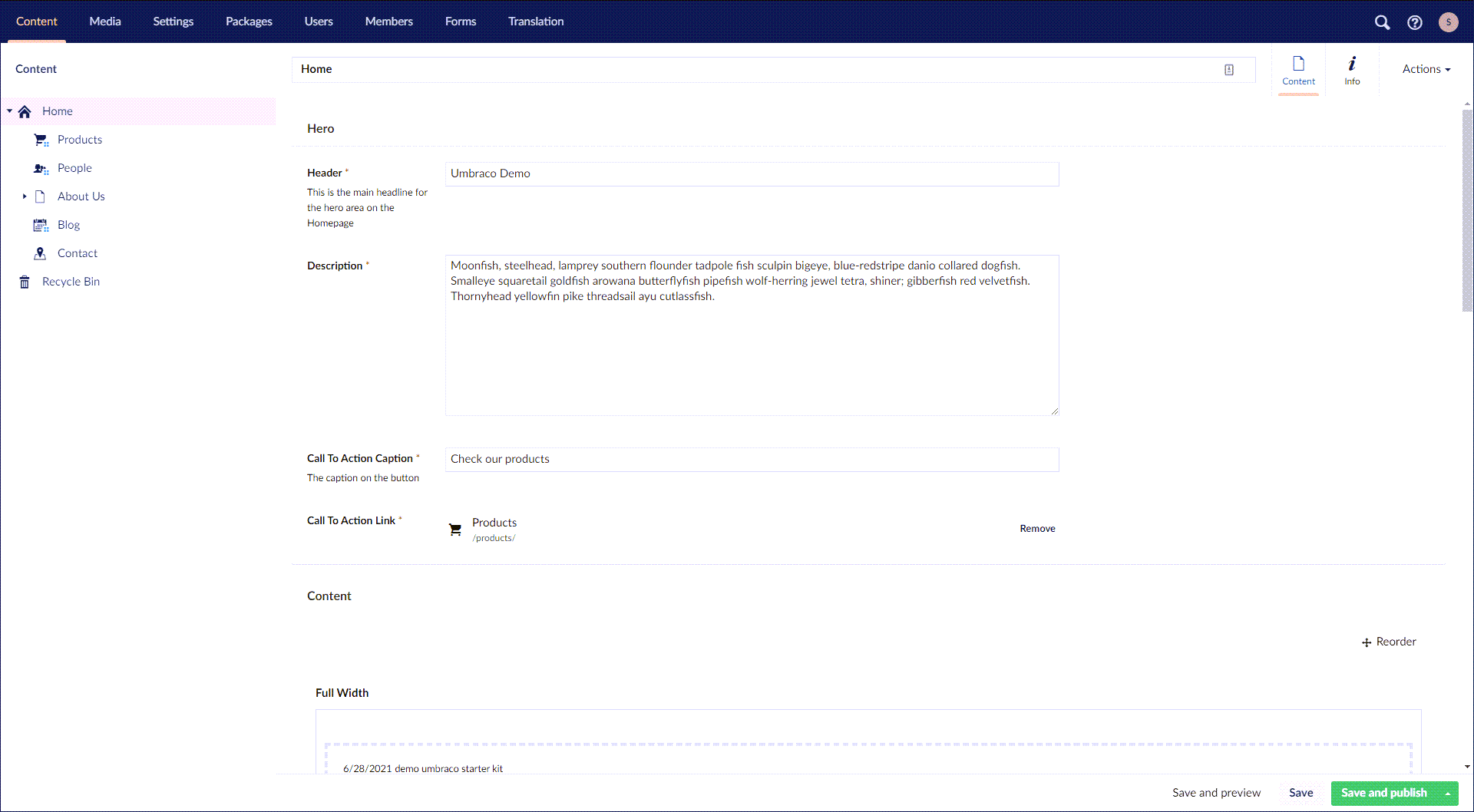 Versie 11.0 van Umbraco is kort geleden uitgekomen. Umbraco is een contentmanagementsysteem voor het bewerken en beheren van dynamische webpagina's. Het geheel is geschreven in C# en draait op een Microsoft-infrastructuur. Er zit een positieve en proactieve community achter met ruim 50.000 geregistreerde gebruikers en ontwikkelaars en die zorgen voor een stabiele stroom aan releases. De belangrijkste veranderingen in versie 11 zijn hieronder voor je op een rijtje gezet
Versie 11.0 van Umbraco is kort geleden uitgekomen. Umbraco is een contentmanagementsysteem voor het bewerken en beheren van dynamische webpagina's. Het geheel is geschreven in C# en draait op een Microsoft-infrastructuur. Er zit een positieve en proactieve community achter met ruim 50.000 geregistreerde gebruikers en ontwikkelaars en die zorgen voor een stabiele stroom aan releases. De belangrijkste veranderingen in versie 11 zijn hieronder voor je op een rijtje gezet
New Property Editor: Block Grid EditorThe Block Grid Editor is a new Property Editor focusing on bringing better layout and content structure capabilities to editors. Taking a cue from the popular Grid Layout editor that has been delivering layout capabilities for content editors since Umbraco 7, the Block Grid Editor is built on modern and future-proof technology and provides a vastly improved developer experience on top.
Building BlocksAs you might have guessed from the name - Block Grid Editor - everything is now based on Blocks (Element Types) which allows developers to craft tailored editing experiences and content structures using known conventions. If you’re at all familiar with the Block List Editor (or Nested) you’ll be right at home.
Using Blocks and Element Types allows you to configure content and settings in a much easier way than with the old Grid Layout editor. You can now use Property Editors to create the Blocks. This means you have many more options and tools available out-of-the-box to tailor the editing experience.
Laying out a GridThere are two different ways of controlling the layout in the Block Grid Editor. Size Options for individual Blocks, and Areas that create predefined content areas, essentially allowing you to nest your grids and control the functionality of these nested grids. This is done to give flexibility in how you work with layout and allow for varying degrees of freedom and creativity.
You can use predefined layouts or a more free-form layout experience where you can resize individual elements. And you of course get all the features you're used to from the Block List Editor such as adding Settings, drag and drop re-ordering, copy/paste blocks, and Property Actions, all in a familiar editing interface.
Advanced ConfigurationWith the features listed above, you can create a flexible content editing experience focusing on freedom and creativity or predefined layout structures - or maybe even a combination of both.
There are Advanced configuration options that allow you to add custom views and stylesheets, control the size of the overlay for a Block, and hide the content edit button if you’re creating an inline editing experience or pulling in data that can’t be edited. These are useful tools but not necessary for creating a good editing experience. Still, they can help make a highly customized editing experience that makes your editors happy, and more easily achievable than ever before.
Making a Beautiful FrontendHaving good configuration and a great editing experience is not the full job though - it also needs to translate into something great on the front end. As with all things Umbraco, you have full control over markup and CSS.
There are helper methods to render Block Grid content. You can either use the example rendering that ships with Umbraco or create your own custom renderer. You can also create partial views for your custom Blocks and it all comes with full support for Models Builder so as a developer you can with strongly typed models with the Block Grid Editor.
Getting Started with the Block Grid editorFirst, there is extensive documentation for the Block Grid Editor covering all the topics mentioned above.
When you add a new Block Grid Editor to your installation, you get the option to add a sample configuration that adds a few simple blocks such as Headline and Rich Text, and you can start from there. This is very similar to the default configuration that shipped with the old Grid Layout editor but now it is optional.
We’ve also published a Block Grid Example Site showing how a more advanced setup can be achieved with the Block Grid Editor. It has a pre-configured Block Grid with custom views for the backoffice, clever use of Areas, and more. Ready to be installed into a new Umbraco 11 project straight from NuGet.


:strip_exif()/i/2004450938.png?f=thumbmedium)